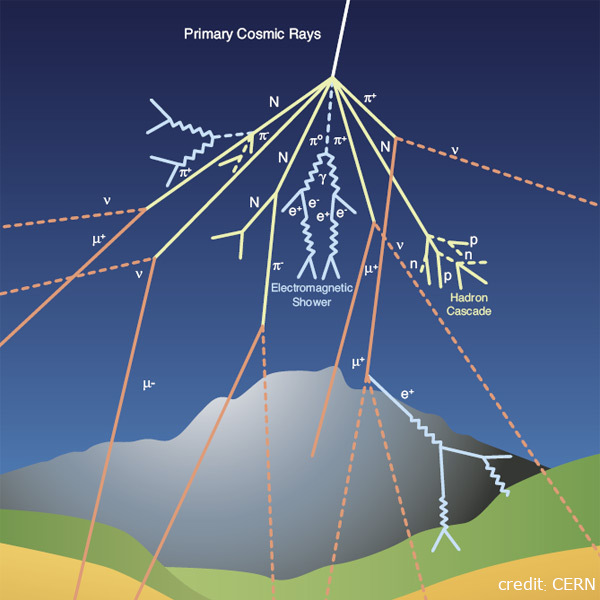Cosmic Rays

Cosmic Rays are elementary particles and nuclei, detected on or near the Earth, that originate in energetic processes in the universe. Physicists work to characterize the cosmic ray spectrum: the abundance of different types of particles and their energies. Observations of the primary particles are made in space (e.g., the Alpha Magnetic Spectrometer, AMS, on the International Space Station) and with high-altitude balloons (e.g., the High Energy Light Isotope eXperiment, HELIX). When cosmic rays interact with the Earth's atmosphere, they generate showers of other particles, called secondary cosmic rays, that are detected by instruments on the ground (e.g., the Pierre Auger surface water tanks and fluorescence detectors), and under the ground (e.g., the AMIGA, Auger Muons and Infill for the Ground Array extension for Pierre Auger). Cosmic ray data is used to constrain models for sources that can produce high-energy particles, either extremely energetic astrophysical environments like those around Active Galactic Nuclei (AGN) or extreme events like gamma ray bursts (GRBs).











